China is, without doubt, the main industrial backstop for Russia’s war effort – especially after Russia lost access to industrial inputs and tools from Japan, Taiwan, South Korea, and much of Europe and North America. Previous Exovera newsletters have detailed Russian dependency on Chinese precursor chemicals and machine tool consumables. This article, however, is about a dependency that goes the other way: the continuing dependency of China on Russia for military jet engines. Specifically, a continuing Chinese dependency on the Soloviev D-30KP-2 engine manufactured by the Russian company UEC Saturn in Rybinsk, about 150 miles north of Moscow.
Please contact us to obtain the source list for this article.
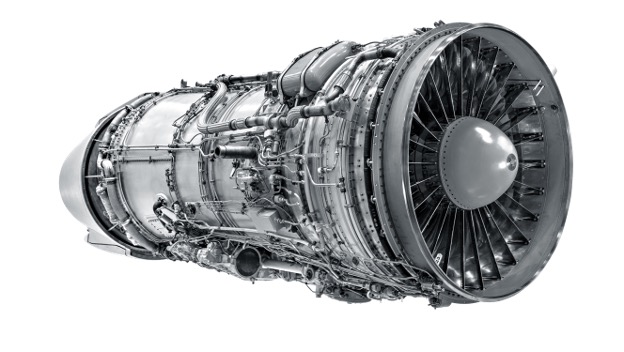
The D-30KP-2 engine. Source, UEC Saturn.
The Russian D-30KP-2 engine powers several Chinese military aircraft, Chinese Ilyushin Il-76 transport aircraft purchased from Russia, China’s only long-range bomber the H-6, and the Chinese Y-20 military transport aircraft, China’s first modern jet-powered military transport aircraft, which is the rough equivalent of the American C-17 Globemaster III.
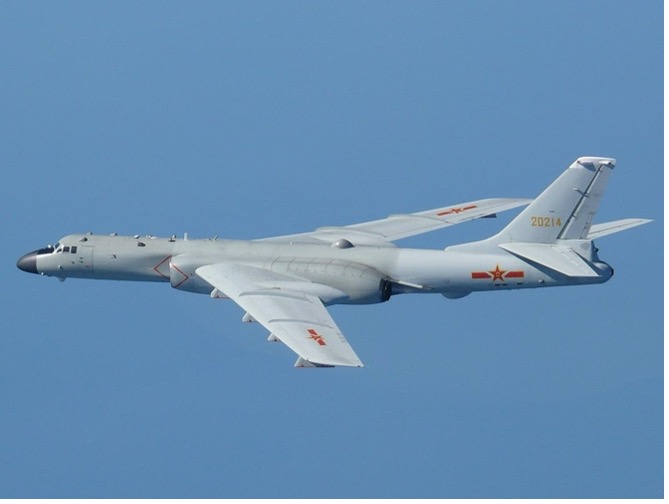
H-6 Bomber, Source: Wikimedia
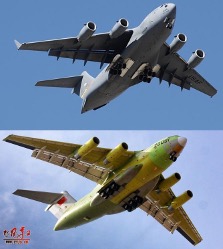
Image showing the Y-20 military transport aircraft below an image of a C-17 Globemaster.
Between 2009 and 2020 Russia supplied 463 D-30KP-2 engines to China. Around a decade ago there were reports that China was producing a copy of the D-30KP-2 dubbed the WS-18, which would end China’s dependence on Russia for these important engines. The WS-18 has not lived up to its promise, at least, not in the depth that would end China’s dependency on Russian engines. Press reports indicate that China has, or is about to, replace the D-30KP-2 engine with its own indigenous WS-20 “Huanghe” [黄河] engine, which is supposed to be more powerful. However Russian commentators have doubted China’s ability to produce a jet engine that is as reliable as and with a service life equivalent to the D-30KP-2.
The WS-20 engine has since been spotted on Chinese military aircraft. Analysts have noted that one can distinguish between aircraft using the WS-20 engine and those still using the Russian D-30KP-2. The D-30KP-2 engine is longer and thinner, while the WS-20 is wider but with a shorter length, and with a more visible exhaust cone.
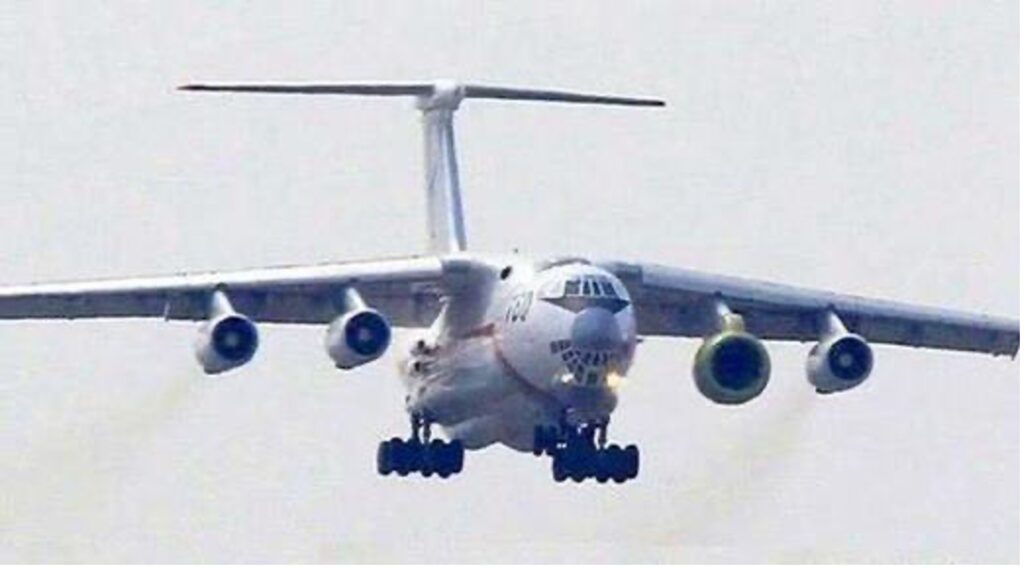
A Chinese Il-76 with three D-30KP-2 engines and one WS-20 engine, the second one from the right.
Russia’s war in Ukraine has greatly disrupted its trade in arms. Russian weapons exports declined by 92% between 2021 and 2024. The Russian weapons and equipment-manufacturing base is having difficulty re-supplying its troops in the field, so naturally capacity which would normally be slated to support orders for exports have been shifted to satisfy Russia’s immediate needs.
Interestingly, trade data shows that Russia’s exports of the D-30KP-2 engines to China has not been affected by the war. If anything, the trade seems to have accelerated and become even more China-focused.
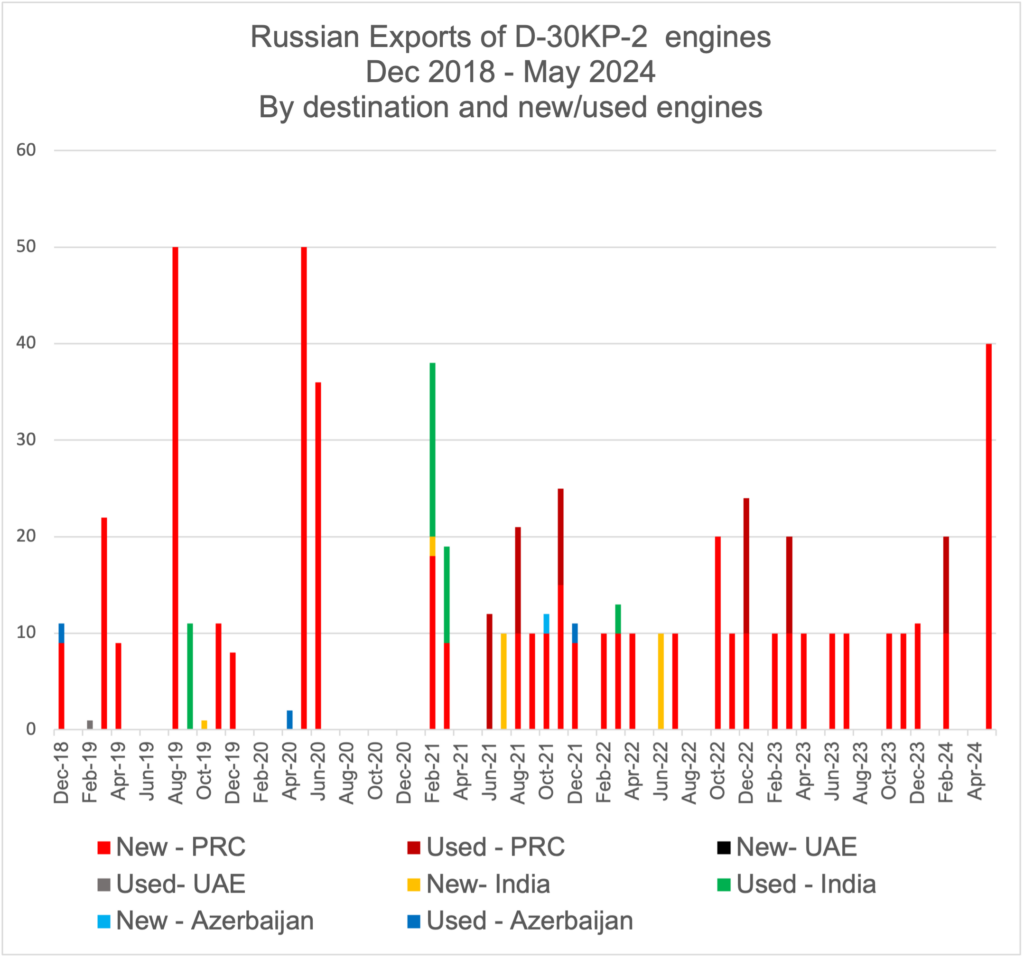 Available data on Russian exports of the D-30KP-2 engine, exports listed as “not for civil use”, show that China was the major customer for these engines, along with India, until the period between late 2021 and mid-2022, when China become the sole export destination for these engines, both new and used.
Available data on Russian exports of the D-30KP-2 engine, exports listed as “not for civil use”, show that China was the major customer for these engines, along with India, until the period between late 2021 and mid-2022, when China become the sole export destination for these engines, both new and used.
The data indicates a production (for export) capacity of around 80 – 100 D-30KP-2 engines a year. However, the most notable change in the data is not the total shipped per year, but in the frequency. For some reason around late 2021 China began receiving new D-30KP-2’s in consignments of ten nearly monthly, rather than larger shipments a few times a year.
Available trade data shows that, at least as of mid-2024 (the most recent data available), China had not ended its dependency on Russian engines for its bomber and heavy-lift aircraft, nor had the war in Ukraine greatly affected the flow of D-30KP-2 engines from Russia to China.
The D-30KP-2 is not the only Russian engine that China may need to sustain its military capacity. China’s Chengdu J-10 multirole combat aircraft had been powered by the Russian AL-31 engine, which is also produced by UEC Saturn, but more recent J-10 variants are reportedly equipped with the Chinese WS-10B Taihang engine. Even so, in November 2024 Russia’s United Engine Corporation showcased its new AL-31FN Series 5 jet engine at China’s Zhuhai airshow. This Russian engine is specifically designed to power China’s J-10 fighter aircraft. It appears that the Russian military engine-building industry is skeptical that China will end its dependence on Russian engines for military aircraft anytime soon.

